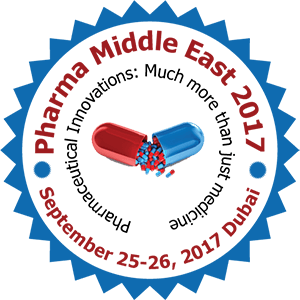Islam Omar
Saudi German Hospital, Egypt
Title: Clinical outcome associated with the use of different inhalation method with and without humidification in asthmatic mechanically ventilated patients
Biography
Biography: Islam Omar
Abstract
Inhaled-medication delivered during mechanical-ventilation is affected by type of aerosol-generator and humidity-condition. Despite many in-vitro studies related to aerosol-delivery to mechanically-ventilated patients, little has been reported on clinical effects of these variables.The aim of this study was to determine effect of humidification and type of aerosolgenerator on clinical-status of mechanically-ventilated asthmatics.72 (36-females) asthmatic-subjects receiving invasive-mechanical-ventilation were enrolled and assigned randomly to 6-treatment groups of 12 (6-females) subjects each received, as possible, all inhaled-medication using their assigned aerosol-generator and humidity-condition during delivery. Aerosol-generators were placed immediately after humidifier within inspiratory-limb of mechanical-ventilation-circuit. First-group used vibrating-mesh-nebulizer (Aerogen-Solo; VM) with-humidification; Second used VM without-humidification; Third used metered-dose-inhaler with AeroChamber-Vent (MDI-AV) with-humidification; Forth used MDI-AV withouthumidification; Fifth used Oxycare-jet-nebulizer (JN) with-humidification; Sixth used JN without-humidification. Measured parameters included clinical-parameters reflected asthma-severity (CP) and end-point-parameters e.g. length-of-stay in the intensive-care-unit (ICU-days) and mechanical-ventilation-days (MV-days).
There was no significant difference between studied subjects in the 6-groups in baseline of CP VM resulted in trend to shorter ICU-days (~1.42days) compared to MDI-AV (p=0.39) and relatively but not significantly shorter ICU-days (~0.75days) compared JN. Aerosol delivery with or without-humidification did not have any significant effect on any of parameters studied with very light insignificant tendency of delivery at humidcondition to decrease MV-days and ICU-days. No significant effect was found of changing humidity during aerosol-delivery to ventilated-patient. VM to deliver aerosol in ventilated-patient resulted in trend to decreased ICU-days compared to JN and MDI-AV. However, we recommend increasing the number of patients studied to corroborate this finding.

